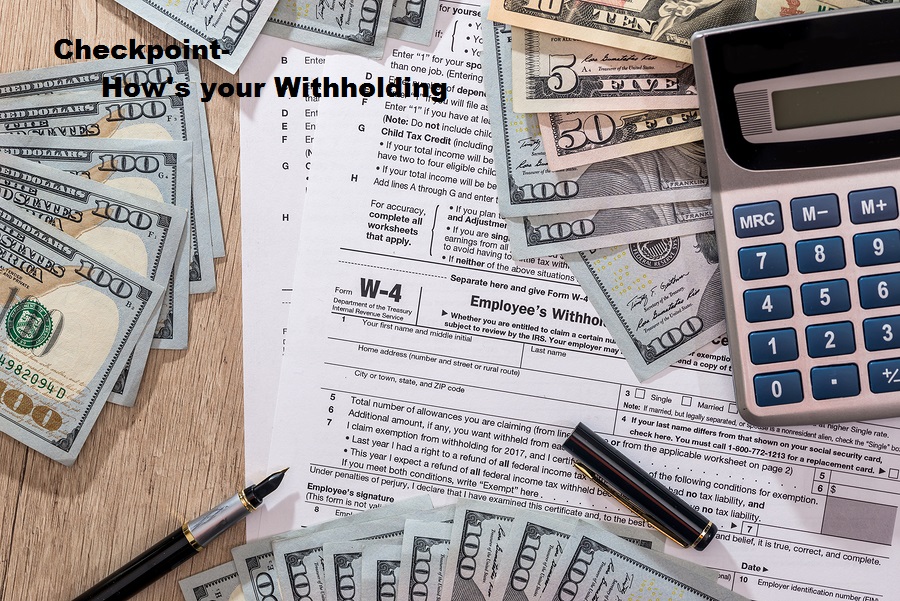I recently read an online forum where a fellow wanted to sue his employer for not properly withholding the man’s income taxes from his wages. While I felt sorry for the man and his looming tax debt, given some of the information he posted, I wasn’t convinced that the employer was at fault. But the tax code and the forms are all pretty confusing, so how do you know that you are withholding correctly? Fortunately, there is help.
First and foremost, if nothing has changed about your job or life situation and you’re happy with your refund/balance due situation, this isn’t for you. If everything is fine, why change? But–if you owed too much last April, or you had a job or lifestyle change, then you really should do a mid-year evaluation to make sure that your withholding is on track. It’s a whole lot easier to change your withholding now than it is to make adjustments in December or after the year is already over.
What you need to do is have a copy of your latest pay stub and your last tax return handy. You’ll need both to answer the questions in the calculator. Then you’re going to click on the link to the IRS withholding calculator.
Now I’m going to be honest, the first time I looked at this I went, “Oh gee, who’d want to bother with this?” But seriously, it’s the best program for figuring out where you stand with your taxes. For most situations, I like it better than some of the fancy professional tax projection programs I’ve used. Most importantly, you don’t need any special training to use it. Just answer all the questions. Sometimes you may have to guess, but do your best. You really do need to have your latest pay stub and last tax return to do this though. If you’re just estimating, it’s not going to be helpful.
The program will tell you, based on what’s actually been taken out of your check, how much your refund or balance due will be. And, if you are expected to owe, it tells you how to change your withholding so as not have a balance due.
So let’s say you ran the program and it does recommend that you change your withholding. What next? That’s easy, take the information to your employer (or the payroll department) and fill out a new W4 form. Unlike some other paperwork that can only be completed annually, you are allowed to change your W4 any time during the year.
So about that guy who wants to sue his employer? I’ll leave that up to the courts. As for me, I’d rather catch a problem before it gets out of hand, and the IRS withholding calculator lets me do that.

